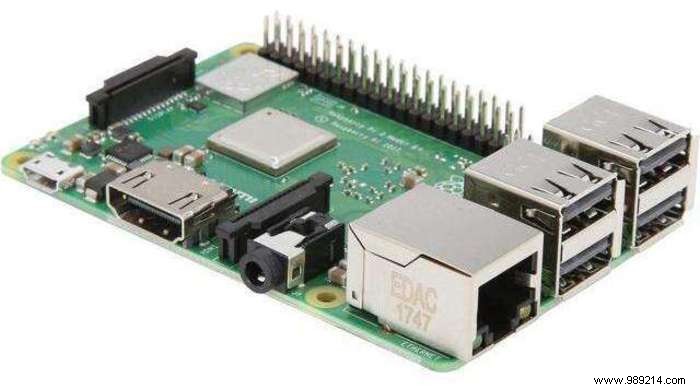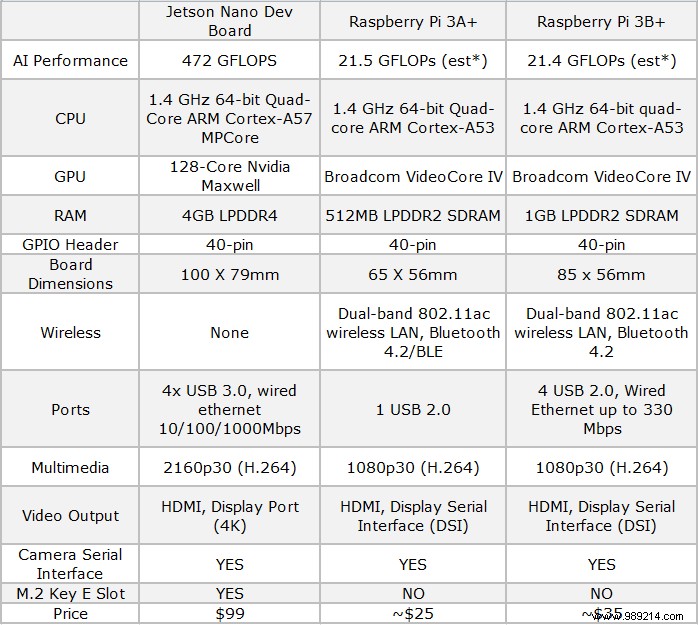Since its debut in 2012, the Raspberry Pi continues to provide a single board computing platform that is small, easy to use, and affordable. The device is offered at an affordable price for the benefit of designers, developers and beginners who wish to integrate Pi systems into their products.
While the Pi has evolved from a simple single-board computer to the powerful 3A+ and 3B+ models we have today, their computing power does not compare to what we see in the latest and most expensive boards. , such as Nvidia Jetson Nano.
Introduced in early 2019, the Nvidia Jetson Nano caused a stir, and we think we know why. Nvidia has been in the AI and machine learning game for several years. The company launched the first AI-based module, the Jetson TX1, in early 2015 as a solution for drones, robots and autonomous vehicles. This project was very successful, but its $599 price tag meant it was too expensive for developers and hobbyists.

The Jetson Nano, on the other hand, takes machine learning seriously. It boasts of an Nvidia Maxwell 128 CUDA GPU optimized for machine learning. This offers 472 GFLOPS for AI performance, as opposed to the 21.4 GFLOPs you get from the Raspberry Pi 3B+ model.
The GPU is powered by a more capable 64-bit quad-core Cortex A57 processor and a whopping 4GB of RAM. While the Rasberry Pi 3+ is built on the same architecture, it only offers 1GB of RAM. This makes the Pi ideal for basic tasks, but it can be a pain to use in a desktop environment. The Jetson Nano's 4GB of RAM and more powerful processor make it the best choice for performing heavy-duty tasks and running an office environment.
When it comes to video processing, the AI features of the Jetson Nano come to light. The Jetson nano can process 4K video using onboard hardware for encoding, decoding, and display. This board can run parallel neural networks to process multiple videos and sensors simultaneously. It can process multiple video streams, up to eight 1080p video streams at a time (photo drones with multiple lenses) and uses machine learning algorithms to detect and track footage. This graph illustrates how Nvidia Jetson Nano compares to the Raspberry Pi Model 3A+ and 3B+.

Looking at the graph above, there really is no comparison when it comes to AI performance. At 472 GFLOPs, the Jetson Nano is almost 22 times more powerful than the two Pi models that offer up to 21.5 GFLOPs. If you are looking for an AI-based single board computer, the Jetson Nano is your best bet.
However, Raspberry Pi has its strengths which can make it a solid choice in many scenarios. For example, despite its power and AI capabilities, the Jetson Nano lacks wireless LAN. The two Raspberry Pis, on the other hand, have built-in Wi-Fi.
However, the new Ethernet controller for Raspberry Pi offers gigabit connectivity at a maximum rate of 300Mb/s, which is significantly slower than the Jetson Nano which supports up to 1000Mb/s.
On the connection side, the Jetson Nano offers 4 USB3.0 ports which is an advantage over the Raspberry Pi which offers four USB 2.0 ports. So which is the best option? It all depends on your personal preferences.